|
|
| My Favourite Planet > English > Middle East > Turkey > Ephesus > photo gallery |
| Ephesus, Turkey |
Ephesus photo gallery 1 |
 |
 |
34 of 62 |
 |
 |
|
| |
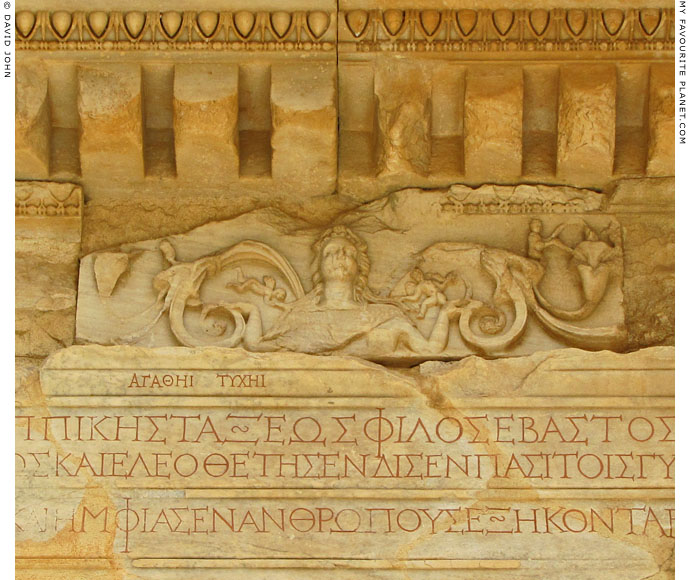
A relief of Aphrodite with erotes (cupids) and a Greek inscription over
the central arch of the Mazeus and Mithridates Gate (see previous page). |
| |
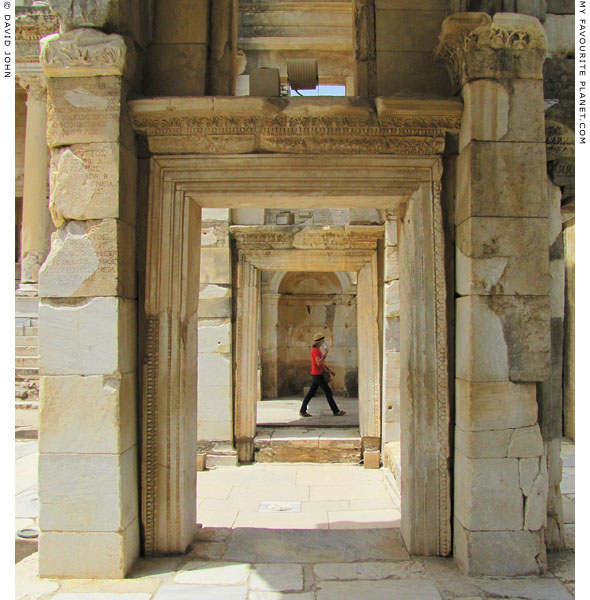
Doorways connecting the east to the west arches of the Gate of Mazeus and Mithridates.
|
Each of the doorways has a window above it, allowing daylight from corresponding windows in the outer the walls thorough the width of the gatweway.
On the top of the left pilaster are yet more Greek inscriptions. Along the far (west) wall of the gate's interior are two arched niches (see photo below). |
|
|
| |
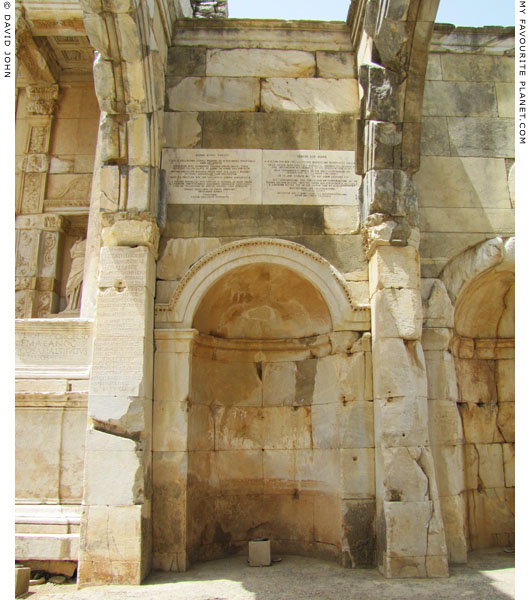
The arched niche on the south side of the west wall inside the gateway.
On the frame of the right niche is a rough relief of Hekate (see photo below).
Above the niche are the inscriptions in Turkish and German commemorating
the reconstruction of the gate 1980-1989 (see previous page). |
| |
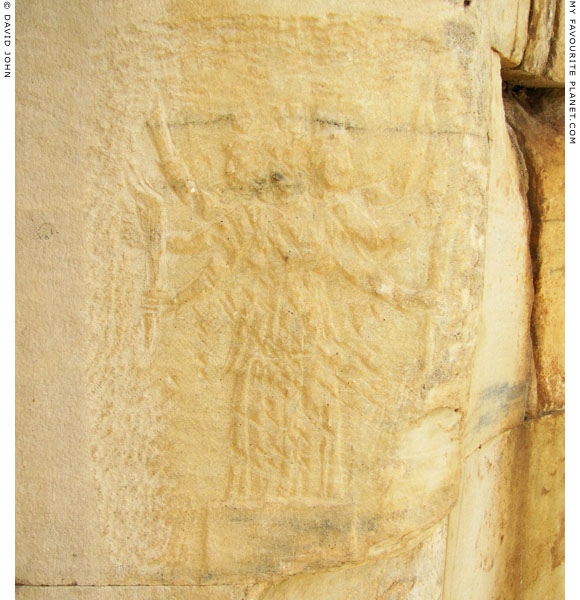
A graffito of a statue of Hekate (Hecate) carved on the wall inside the western archway
of the Gate of Mazeus and Mithridates; on the frame of the second arched niche, on the
left as you enter from the Library of Celsus (see the photo on the previous page).
|
It is uncertain when or why this shallow relief was made here. Although it is quite crude, its execution betrays skill in drawing and carving stone. There are several other such graffiti works around Ephesus.
The goddess Hekate is shown with three crowned heads and six outstretched arms, each holding a burning torch. In the 5th century BC the Athenian sculptor Alkamenes made a statue of a triple-bodied Hekate which was said to be the first of this type. Around a century later Menestratos, another Athenian, made a marble statue of Hekate for the Temple of Artemis in Ephesus:
"... there is a Hecate of his [Menestratos] at Ephesus, in the Temple of Diana [Artemis] there, behind the sanctuary. The keepers of the temple recommend persons, when viewing it, to be careful of their eyes, so remarkably radiant is the marble."
Pliny the Elder (23-79 AD), Natural History, Book 36, chapter 4. At Perseus Tufts. |
|
|
| |
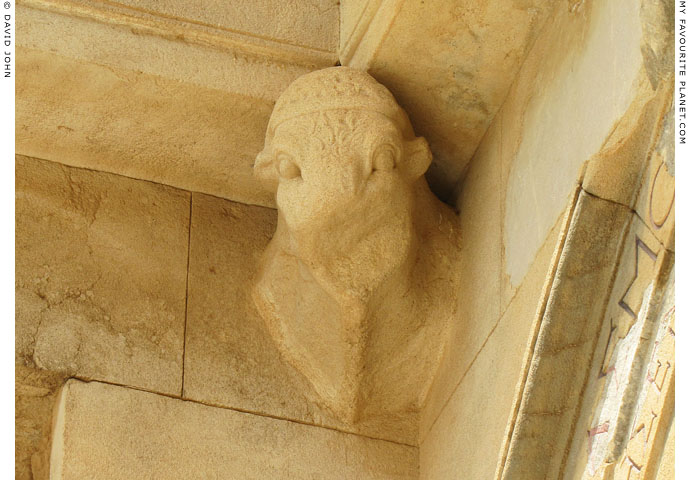
A corbel in the form of a bovine head inside the gateway. |
Photos, articles and map: © David John,
except where otherwise specified.
Additional photos: © Konstanze Gundudis
All photos and articles are copyright protected.
Images and materials by other authors
have been attributed where applicable.
Please do not use these photos or articles without permission.
If you are interested in using any of the photos for your website,
project or publication, please get in contact.
Higher resolution versions are available on request.
Some of the information and photos in this guide to Ephesus
originally appeared in 2004 on davidjohnberlin.de. |
|
| |
 |
Visit the My Favourite Planet Group on Facebook.
Join the group, write a message or comment,
post photos and videos, start a discussion... |
|
|
| |